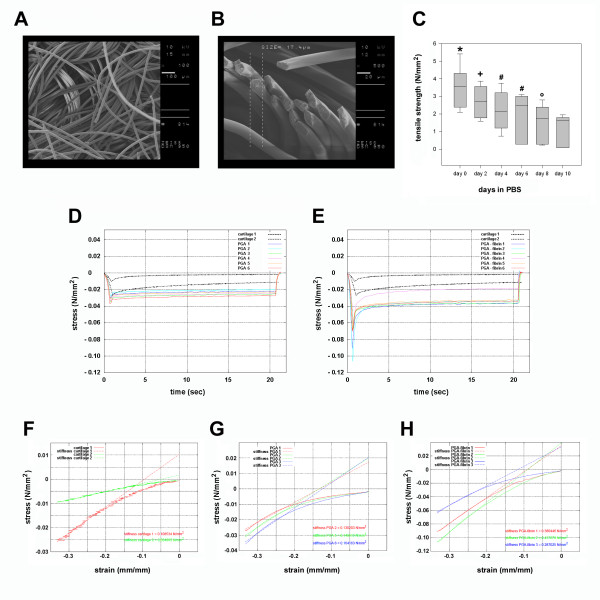Figure 3.
Electron microscopical and biomechanical characterization of the resorbable, textile polyglycolic acid (PGA) scaffolds. Scanning electron microscopy shows that non-woven, bulked textile structure of the PGA scaffolds with smooth and regular PGA fibers (A). PGA fibers cut with a scalpel show a diameter of approximately 17 μm (B). Tensile strength of PGA scaffolds and degradation kinetics in phosphate buffered saline (C). Strength is presented as median with the ends of the boxes defining the 25th and 75th percentiles and error bars defining the 10th and 90th percentiles (* p<0.0001 versus day 2–10; + p<0.008 versus day 6–10; # p<0.002 versus day 8–10; ° p<0.003 versus day 10). Graphical depiction of the measured forces during compression test performed with native articular cartilage as reference tissue and PGA (D) as well as PGA-fibrin (E) scaffolds. Compression tests and stiffness of human articular cartilage (F), PGA scaffolds (G) and PGA-fibrin scaffolds (H).

